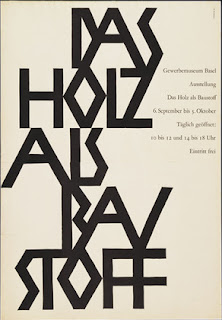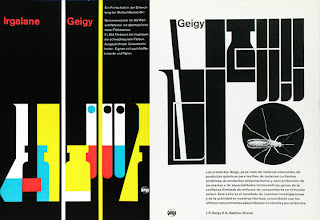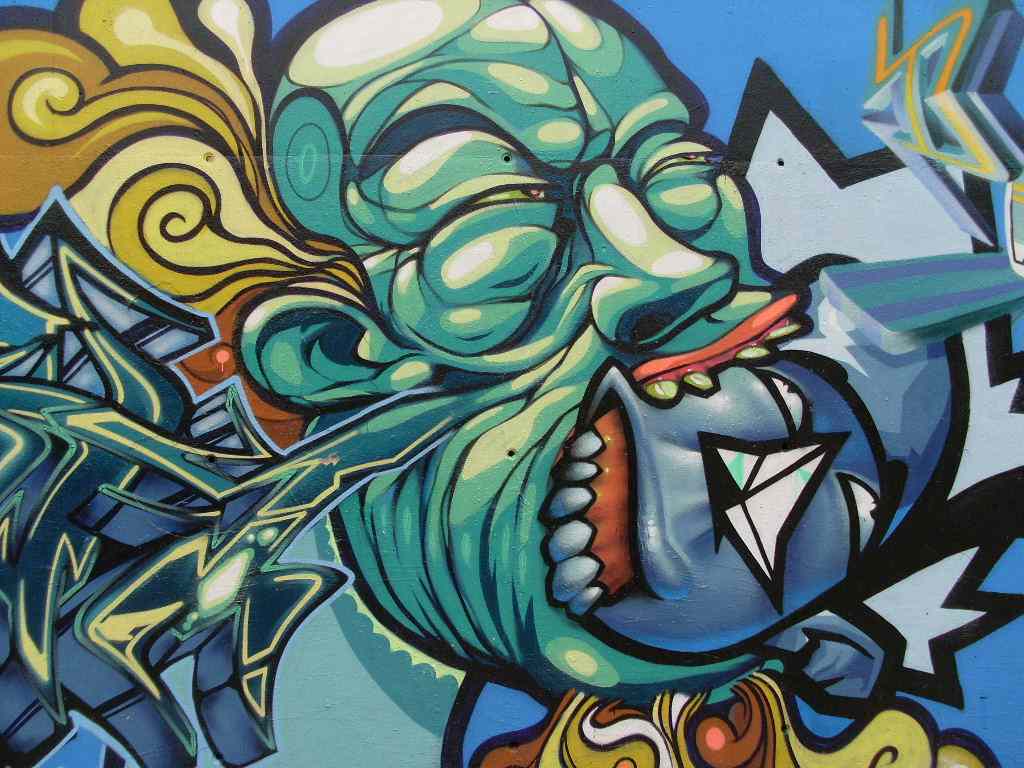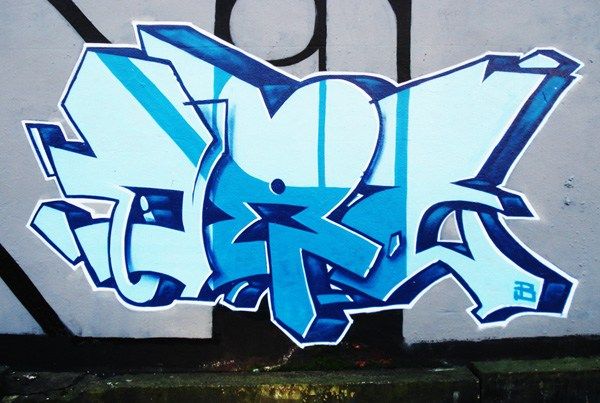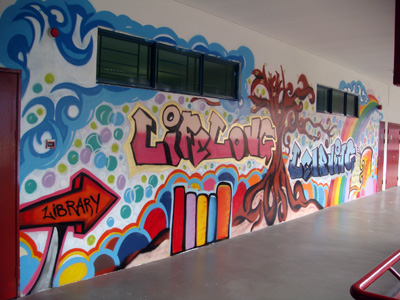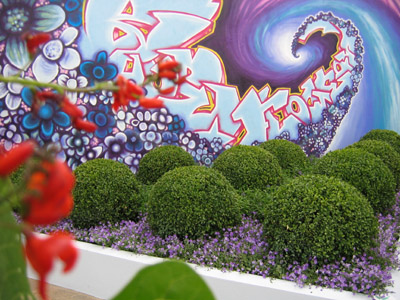Table of Contents: |
After the second world war the Swiss Grid Style, also known as the International Typographic Style was developed by Swiss designers, such as Armin Hofmann, Josef M�ller Brockmann, Max Bill, Richard P Lohse, Hans Neuberg, and Carlo Vivarelli who began to experiment with typography and photo-montage. Characterized by a cold, emotionally sterile grid style; they used structured layout, and unjustified type, that became very influential in the mid twentieth century and influenced a vast audience. These pioneering graphic artists saw design as part of industrial production and searched for anonymous, objective visual communication. They chose photographic images rather than illustration, and typefaces that were industrial-looking rather than those designed for books.
In short, the visual characteristics of the International Typographic Style include:
- Asymmetrically organizing the design elements on a mathematically-constructed grid to create Visual unity in a composition.
- Pesenting visual and verbal information in a clear and factual manner, using objective photography and illustration, and ensuring that it filters any propaganda and the exaggerated claims of commercial advertising
- Using sans-serif typography set flush left, ragged right -- The movement believed sans-serif typography expressed the spirit of a progressive age and that mathematical grids were the most legible and harmonious means for structuring information.
- Design is a socially worthwhile and serious vocation.
- In design there is no room for eccentricity and/or idiosyncrasy. Design should be grounded on universal artistic principles, and using a scientific approach should provide a well-defined solution to a problem.
- The designer is a visual communicator and not an artist. The designer acts an objective and reliable transmitter of important information between members of society.
- The ideal of design is to achieve clarity and order.
I have always aspired to a distinct arrangement of typographic and pictorial elements, the clear identification of priorities. The formal organisation of the surface by means of the grid, a knowledge of the rules that govern legibility (lines length, word and letter spacing and so on) and the meaningful use of colour are among the tools a designer must master in order to complete his or her task in a rational and economic matter.The greatest works of art impress through their balance, their harmony, their proportions, all of which can be measured. That is one of the reasons why paintings, sculptures and buildings that are thousands of years old � by the Egyptians, Chinese, Assyrians and so on � are still fascinating to us today.The objective was an effective and efficient visual communication: information presented this way was assumed not only read more quickly and easily, but is also more easily understood and retained in memory. Josef M�ller Brockmann was born in Rapperswil, Switzerland in 1914 and studied architecture, design and history of art at the University of Zurich and at the city�s Kunstgewerbeschule. He began his career as an apprentice to the designer and advertising consultant Walter Diggelman before, in 1936, establishing his own Zurich studio specialising in graphics, exhibition design and photography. According to his own account;
" I became a graphic designer by accident". At school I was loth to write much for compositions so I put in illustrations instead. My teacher enjoyed them and thought I had talent. He suggested that I should pursue an artistic career: gravure etching or retouching, for instance. So I was apprenticed as a retoucher in a printing works. I lasted one day because I said that this wasn�t artistic work. After that I was apprenticed to two elderly architects. With them I lasted four weeks. Then I went to see all the graphic designers I found listed in the telephone directory because I wanted to find out what they did. Afterwards I enrolled to study graphic design at the Zurich Gewerbeschule."As a graphic designer, M�ller Brockmann's skills included letterpress, silkscreen, and lithography. His geometric style was demonstrated in �Musica viva�, a series of concert posters for the Zurich Tonhalle in 1951. It is arguably claimed that his work was an adaptation of concrete art; which had been described by Theo van Doesburg around 1930, as works of art that are created by means of art's most genuine means of composition and principles, entirely doing without allusions to phenomenon of nature and their abstraction. New realities were supposed to be created by forming colors, space, light and movement. The style had to incorporate mathematical methods of spatial organization into graphic work, which drew on the language of Constructivism to create a visual correlative to the structural harmonies of the music. M�ller Brockmann's 1955 poster, Beethoven, was supposed to portray Beethoven's music through a series of concentric curves, and has been offered as an example such an adaptation, and this assertion had been accepted at its face value by many pundits, who were impressed by the novelty, elegance and the simplicity of design. As M�ller Brockmann has stated:
In my designs for posters, advertisements, brochures and exhibitions, subjectivity is suppressed in favour of a geometric grid that determines the arrangement of the type and images. The grid is an organisational system that makes it easier to read the message...The grid is an organisational system that enables you to achieve an orderly result at a minimum cost. The task is solved more easily, faster and better. It brings the arbitrary organisation of text into a logical system in keeping with the conflict. It can demonstrate uniformity that reaches beyond national boundaries, a boon to advertising from which IBM, for instance, has profited. Objective-rational design means legible design, objective information that is communicated without superlatives or emotional subjectivity.From 1967 he was European design consultant for IBM. He is the author of The Graphic Artist and his Design Problems (1961), History of Visual Communication (1971), History of the Poster (with Shizuko Muller-Yoshikawa, 1971). Nevertheless, M�ller Brockmann's work was rigid and soulless, suffering from certain self-imposed restrictions of the Swiss style, and dogmas such as the rejection of symmetry since fascists had liked it! He has said:
symmetry and the central axis are what characterise fascist architecture. Modernism and democracy reject the axis... I have taken my love of order to the point of manifest boredom, producing design solutions which are valid but deadly boring. Thanks to the passage of time, I am now just about able to examine my posters for the Zurich Tonhalle to discover why some are better than others. I am amazed how many are bad. The Beethoven poster is good, also the �Musica Viva� poster of 1970 with the green lettering on a blue background and the two Tonhalle posters of 1969 and 1972 with the rhythmic type.Looking at this juncture at these posters, when digital software packages can do any of them in just few minutes and with few of clinks, it is easy to dismiss the whole exercise as boring and insignificant. Of course, the world would have become a boring place should all posters have adopted the Swiss grid style. However, we have to remind ourselves that when these posters appeared on the scene their geometrical aesthetics were quite novel and rare. Perhaps ironically, M�ller Brockmann has stated that he did not like experiments such as that of Neville Brody's typefaces that have the potential to rescue the grid style.
Typefaces designed for Neville Brody. By the early 1990s Neville Brody was able, with a straight face, to recommend abandoning typography�s requirement of legibility � gloating as a chill shot down the spines of his type-pro audiences...
M�ller Brockmann was totally dismissive of Brody's powerful artistic impact. The fact that not all viewers are of commercial types, and not everybody is concerned with profit maximizing attitudes that just require to get the information in an efficient and cost effective manner; the fact that there are also viewers that are interested in looking at a poster's typeface from an artistic view point and reflect on them, which in the process may also convey the message of an advertisement appears to have been totally alien to him. He has said; Some set themselves the task of making typography so unreadable that it is almost like a picture puzzle. The illegibility is then sold as an artistic project. I wouldn�t read something like that unless I had to. The same rational criterion applies to wobbly forms and blurred contours: can I read this faster? Text is communication of content, a fact reflected in classical typefaces and legible typography... (typefaces designed for Neville Brody) are not suitable for advertisements and posters. They are exceptions to the rule and individual cases are not a basis for teaching graphic design. These alphabets are confused, aesthetically lacking and bad. Playing around is always an excuse for too little understanding, which makes people fall on imagination and speak of artistic freedom, inspiration and good ideas. Such typefaces are interesting as studies in legibility. But I don�t see any sense in them. They are a personal attempt to deal with a problem and I find them not only bad but senseless because they lack an area of application.-- Max Bill (1908�1994), was born in Winterthur, Switzerland. An architect, painter, typographer, industrial designer, engineer, sculptor, educator, and graphic designer, Bill was initially a student at the Kunstgewerbeschule and apprenticed as a silversmith before beginning his studies in 1927 at the Bauhaus in Dessau, Germany, with teachers such as Wassily Kandinsky, Paul Klee, and Oskar Schlemmer. Bill permanently settled in Zurich, Switzerland, in 1929, and in 1937 became involved with a group of Swiss artists and designers named the Allianz. The Allianz group advocated the concrete theories of art and design and included Max Huber, Leo Leuppi, and Richard Paul Lohse. In 1950, Max Bill and Otl Aicher founded the Ulm School of Design (Hochschule fur Gestaltung-HfG Ulm) in Ulm, Germany, a design school initially created in the tradition of the Bauhaus and that is notable for its inclusion of semiotics, the philosophical theory of signs and symbols, as a field of study. Bill was of the view that "It is possible to develop an art largely on the basis of mathematical thinking." Over, the 1967-71 period, Bill taught at the Staatliche Hochschule fur Bildende Kunste in Hamburg where he was the chair of environmental design. As a graphic designer, he enthusiastically embraced the tenets and philosophical views of this modernist movement. The majority of his graphic work is based solely on cohesive visual principles of organization and composed of purist forms�modular grids, san serif typography, asymmetric compositions, linear spatial divisions, mathematical progressions, and dynamic figure�ground relationships. --
Richard Paul Lohse (1902-1988) was born in Z�rich (Switzerland) in 1902. In 1918 he joined the advertising agency Max Dalang where he trained to be an advertising artist, but in his artistic career he started with figurative works and gradually moved to post-cubism style. Lohse worked for the Max Dalang agency until 1927, where he became interested in the international avant-garde movements in both its artistic and political aspects. In 1937 Lohse, a key figure in the "Swiss School", and Leo Leuppi joined forces to establish Allianz, an association of Swiss modern artists, promoting publications, exhibitions and the dissemination of avant-garde art. He collaborated with Max Bill and Verena Loevesberg in the Zurcher Konkrete group, which was affiliated with Allianz. In 1938, Lohse and Irmgard Burchard, his first wife, organise the "Twentieth Century German Art" exhibition in London. Soon after Lohse joined the resistance movement where he met his second wife Ida Alis D�rner. In 1942 Lohse formulated his conception of constructive painting, a style that was highly structural. In the words of Fr. W. Heckmanns;
His horizontal and vertical structures follow each other in serial and modular orders within the rectangular limits of the canvas. The essential content of his work is a rational interpretation of the relationship between artistic practice and the problem of the form of social organization, in short a human attitude towards the balance of law and freedom.In the years 1947-1956, Lohse was an editor and designer for the swiss architectural magazine bauen+wohnen or construction+habitation. A special edition of the magazine was launched for Germany in 1952. Lohse's style was characterized by his devotion to precision and clarity in his theoretical framework. He saw structure not as a preliminary foundation but as a totality of concept in the image. He conceptualized the canvas as a field of interacting modules, in which the color and the form are complementary in creation of a formal color structure.
 |
| Richard Paul Lohse, "Fifteen systematic vertical color lines with diagonal violet", 1975 |
Armin Hofmann was born in 1920 in Winterthur, Switzerland. During the 1937-39 period, Hofmann studied at Kunstgewerbeschule in Z�rich and apprenticed as a lithographer until 1943. From 1943 until 1948 He worked as lithographer in Basel and Berne and in his own graphic atelier. In 1946, Hofmann joined the Allgemeine Gewerbeschule (AGS) in Basel, where he and Ruder established a world renowned advanced course in graphic design. Kenneth Hiebert, a former student of Hofmann; recalls that in the early sixties, Hofmann would occasionally bring in a Cassandre or Stoecklin poster and perfunctorily tack it to the wall. When the students cringed at this apparent maltreatment, Hofmann would say, �A good poster can take it.� What he really meant was that the posters were not intended as museum pieces but as things that should weather the harsh treatment of the streets. In the words of Paul Rand
----- His goals, though pragmatic, are never pecuniary. His influence has been as strong beyond the classroom as within it. Even those who are his critics are eager about his ideas as those who sit at his feet. He had a visiting professorship at the Philadelphia College of Art in 1955. Then came an appointment at Yale University, where he regularly conducted working seminars in graphic art and became director of the advanced graphic course in 1967. He carried on teaching abroad in Ahmedabad, India. Hofmann�s book Graphic Design Manual: Principles and Practiceis is a seminal work in graphic design. He has created many posters, logos, color concepts, signage systems and art-in-building projects, as well as participating in many exhibitions. According to him � primary in black and white posters is to counteract the trivialization of color as it exists today on billboards and in advertising.
Hans Neuburg (1904?�?1983) was born in Grulich, Austria-Hungary (today Czechoslovakia). at the age fifteen he enrolled at Orell F�ssli AG in Zurich and graduated in 1922. After graduation he worked at various positions in advertising, freelance graphic design, and magazine editor. Over the 1958-65 he and is fellow artists Richard Paul Lohse, joseph M�ller-Brockmann and carlo vivarelli established �Neue Grafik� magazine. After a brief two years period assuming the directorship of the Gewerbemuseum in Winterhur in 1962-64 during which he also taught at the Hochschule f�r Gestaltung in Ulm, and writing a number of books including Graphic Design in Swiss Industry (1965), Publicity and Graphic Design in the Chemical Industry (1967) and Conceptions of International Exhibition (1969), he moved to Ottawa, Canada, to teach at Carlton University, School of Industrial Design in 1971.
---- Carlo Vivarelli (1919-1986) was a graphic designer, painter and sculptor who was born in Zurich and studied at the renowned Kunstgewerbeschule from 1934-39 and in 1946 became Art Director at the progressive avant garde Studio Boggeri in Milan. During this time and when he returned to his native Switzerland he became one of the leaders of the Swiss Modernists and in 1958 became a co-founder of Neue Grafik magazine. In his later years he concentrated more on his concrete art and sculptures.
---- The concept of the total grid has been the brainchild of Wim Crouwel, a dutch graphic designer, born in 1928. He is one of the five founders of Total Design, a multi-disciplinary design studio in the Netherlands. Crouwel studied fine art in Groningen before moving to Amsterdam in the early 1950s where he initially worked for an exhibition design company. Because of his interest in architecture, and his spatial sensitivities he applied for commissions for cultural institutions, such as the Van Abbe Museum in Eindhoven in 1956, and the Stedelijk Museum in Amsterdam shortly afterwards for which Crouwel was solely responsible to develop an identity by posters and catalogues. It was at the Stedelijk that Crouwel created his Neu Alphabet, an unconventional typeface based on grid system. In 1963 Crouwel founded Total Design, a multi-disciplinary design agency, that its hallmark was modular structuring and grids. With a systematic approach to design projects, it created the identity for a large number of Dutch companies including some multinationals like IBM and Olivetti. Total Design altered the visual landscape of the Netherlands throughout the 1960-70 period. In the 1970s Crouwel designed the Dutch Pavilion for the Osaka World Fair, as well as numerous postal stamps for the Dutch post office and a controversial redesign of the telephone book using only lowercase letters. Crouwel's typeface was constructed using only horizontal and vertical lines creating an alphabet of all lowercases. Although only half of the letters were recognizable, with the emergence of personal computers, his modern typeface was particularly aimed at digital systems in 1967. However, for many Crouwel's typeface appeared illegible. It challenged the design establishment, but Crouwel was happily engaged in the ensued controversy and readily confessed that he attaches a higher priority to visual aesthetics relative to functionality. Crouwel has stated; "I simply wanted to make a consistent alphabet on the basis of that grid of squares. I did not want any cluttering of vertical stems and did not find a solution within the conventional structure of the characters. So I began researching the past, looking for alternative signs with which I could replace the conventional forms. One could have made them up, but I wanted them to have some kind of footing in the history of type"His new typeface was redrawn by Brett Wickens and Peter Saville for the Joy Division album, �Substance� in the late 80s and then digitized and made available for use in 1997 by The Foundry. Crouwel designed a number of other fonts including Gridnick, an appropriate reference to his use of grid systems and Mr. Gridnick became Crouwel�s endearing nickname. ---- The graphic designs of the Italian graphic designer couple, Lella Valle and her husband Massimo Vignelli, are also based on concept of total design in the confine of a grid. Born in Udine in 1936, Lella Valle studied architecture, and met Massimo Vignelli who also studied architecture in Venice, in the 1950s. The couple moved to to the US during the 1958-1960 period, where Lella Vignelli worked in New York for Skidmore, Owings & Merrill and Massimo Vignelli taught at the Chicago Institue of Design. In 1960 they returned to Italy and opened a graphic design studio in Milan. Five years later Massimo joined Bob Noorda and Jay Doblin in founding Unimark International, a design consultancy, in Milan. In that same year, 1965, Vignellies moved to New York, in order to manage a Unimark branch that specialized in developing corporate logos and designing the corporate identity for the business clients. According to Massimo they intended to return to Milan after a short while, but that didn't come to pass and they settled in New York for good. In 1971, they rebranded the practice as Vignelli Associates, which created corporate identities for firms such as American Airlines, Bloomingdale's, Cinzano, Lancia, United Colors of Benetton, Ford, Xerox, and the International Design Center New York. While working for Unimark, Vignellies redesigned the look of the NYC Metropolitan Transit Authority with a new subway map and train identification sign system. They Replaced the previously chaotic typography with Helvetica and reduced the train routes down to solid color, while geometric lines organized the map and allowed signs to be clearer and more distinct. In 1977, Vignellies designed the Unigrid System for the National Park Service. The module grid system allowed the the National Park to create brochures in ten basic formats and to keep a consistent, recognizable structure across all it�s materials. With their training grounded in architecture, Vignellies established a vision of an organized, systematic structural approach early in their design careers. The underlying structure of many of their endeavors in corporate identity, publication, book design, and interiors continues to be the a strictly grid-based design. Lella & Massimo began exploring the grid structure early in their career in Milan by working on corporate entities and projects for various cultural organizations. These early works allowed them to build a design style focused on dividing space within a modular grid that was subdivided rationally into distinct zones. Breaking down the page into smaller intervals of space permitted a clear translation of complex informational material. Most of their designs utilize a limited color palette and use mostly five typefaces Garamond, Bodoni, Helvetica, Univers, and Century. According to Massimo:
"Bodoni is one of the most elegant typefaces ever designed. When I talk about elegance, I mean intellectual elegance. Elegance of the mind."
------------------------------------------------------------------------------------ This work is licensed under a Creative Commons Attribution-No Derivative Works 3.0 Unported License.
















